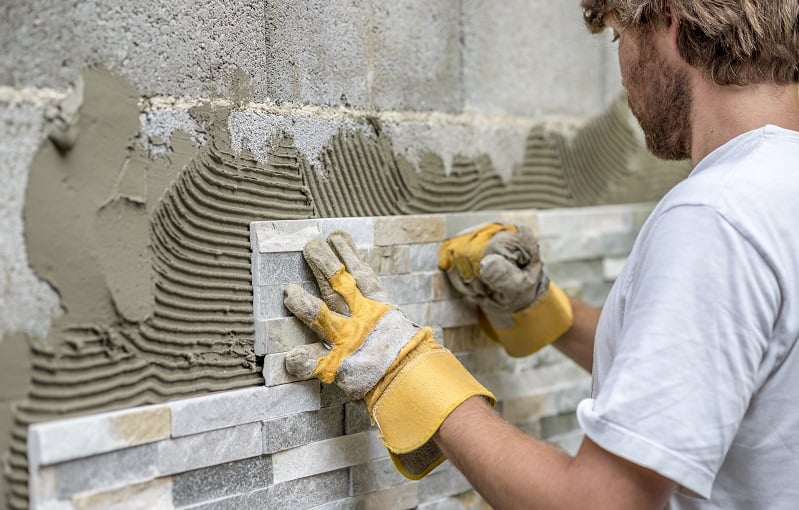Transform Your Home with Professional Tile Installation Austin
Transform Your Home with Professional Tile Installation Austin
Blog Article
Discover the Keys to Perfect Floor Tile Setup Every Time
Accomplishing perfect tile installation may feel like a daunting job, usually resulting in aggravation and imperfections that diminish the overall visual. Nonetheless, mastering the art of tile installation entails a series of exact actions and strategies that, when performed appropriately, can result in a seamless and refined coating. From surface preparation to grout application, each stage plays an important duty in the last end result of your project. By understanding the keys behind each step, you can make certain that your ceramic tile setup not only fulfills but surpasses your expectations.
Correct Surface Area Prep Work
Effective floor tile installment hinges substantially on meticulous surface preparation to make sure a perfect end result. The surface area needs to be tidy, dry, and structurally seem to stop future problems such as loosened tiles or fractured grout.
To ensure proper attachment, it is suggested to roughen smooth surfaces with sanding or scarifying. Additionally, using a guide can enhance bonding between the substrate and the tile adhesive. Uneven surface areas should be leveled utilizing a self-leveling compound to avoid lippage and make sure a smooth surface.
Additionally, checking for possible resources of dampness is important, as excess moisture can lead to mold growth and damage the ceramic tiles with time. Making use of a moisture obstacle or waterproofing membrane in damp areas like restrooms or kitchen areas is crucial to shield the ceramic tiles from water damage. By carefully preparing the surface before ceramic tile installation, one can produce a resilient and visually appealing tiled location that will certainly stand the test of time.

Choosing the Right Adhesive
Selecting the ideal adhesive is an important action in ensuring the successful installation of ceramic tiles. The type of adhesive you choose will depend on various elements such as the kind of floor tile, the substrate product, and the location of the installment. There are various sorts of adhesives offered in the marketplace, consisting of thin-set mortar, mastic, and epoxy.

Epoxy adhesives are extremely sturdy and waterproof, making them optimal for areas prone to moisture such as kitchens or washrooms. They are likewise suitable for setting up glass or steel tiles. When choosing a glue, make certain to comply with the manufacturer's suggestions and think about the details requirements of your ceramic tile setup project.
Accuracy Reducing Techniques
One of the most typical tools utilized for precision cutting in floor tile installation is the floor tile cutter. Ceramic tile cutters come in various types, consisting of manual ceramic tile cutters, electrical wet saws, and handheld ceramic tile cutters. Hand-operated ceramic tile cutters are ideal for straight cuts on ceramic and porcelain ceramic tiles, supplying accurate and clean edges.
Furthermore, utilizing devices like ceramic tile scribes or glass cutters can help in scoring and snapping floor tiles with precision. By mastering these precision cutting strategies, floor tile installers can guarantee a specialist finish and an aesthetically attractive outcome in their ceramic tile projects.

Cement Application Tips
When transitioning from accuracy reducing strategies to grout application in ceramic tile installment, attention to detail and method is extremely important for achieving a perfect finish. Grout serves not only as a useful aspect that loads the voids between ceramic tiles but additionally plays a significant role in the overall aesthetic of the installment.
When the cement is applied, use a wet sponge to clean the ceramic tiles, making sure not to get rid of grout from the joints. Complying with these grout application tips will certainly result in a properly installed tile surface that improves the elegance of any area.
Finishing Touches and Maintenance
To complete the tile installment task properly, focus to information during the ending up touches and routine upkeep is critical. After the grout has dried and the floor tiles are securely in location, the final steps include making certain that all edges are properly sealed. Applying check it out a top notch sealer around the border of the tiled location assists stop water damages and prolongs the life of the installation. Furthermore, looking for any kind of loosened floor tiles or grout and addressing them promptly can prevent extra significant problems down the line.
Routine upkeep is vital to maintaining the appeal and performance of your tiled surface areas. An easy routine of sweeping or vacuuming followed by wiping with a mild cleanser can help keep your ceramic tiles looking pristine (tile installation austin). For areas that are regularly revealed to dampness, such as washrooms or cooking areas, normal resealing of grout lines is recommended to stop mold and mildew growth
Verdict
In conclusion, attaining perfect floor tile installment every single time calls for focus to detail and correct strategies. By focusing on surface area prep work, choosing the correct adhesive, using precision cutting methods, using cement very carefully, and do with focus to detail, you can ensure a professional-looking outcome. Bear in mind to adhere to these steps and preserve your ceramic tiles regularly to lengthen their lifespan and official website keep them looking their finest.
One of the most typical tools made use of for accuracy cutting in floor tile installment is the ceramic tile cutter. Tile cutters come in numerous kinds, consisting of hand-operated ceramic tile cutters, electrical damp saws, and handheld tile cutters. Hands-on ceramic tile cutters are ideal for straight cuts on ceramic and porcelain ceramic tiles, giving clean and exact edges. In addition, using devices like ceramic tile scribes or glass cutters can assist in racking up and breaking ceramic tiles with precision. By mastering these accuracy reducing methods, ceramic tile installers can browse this site ensure an expert coating and an aesthetically attractive result in their tile projects.
Report this page